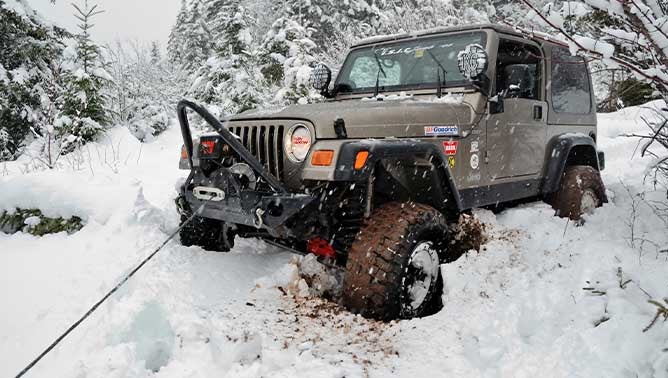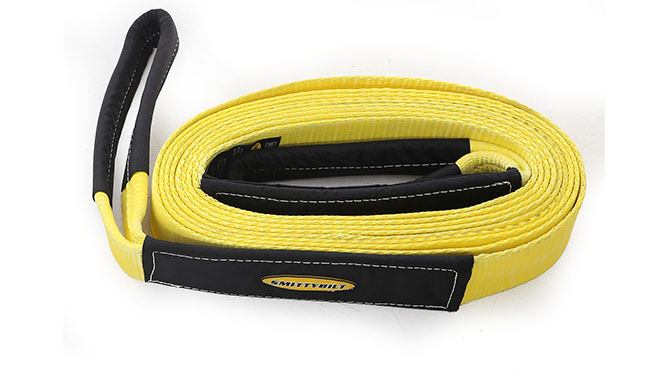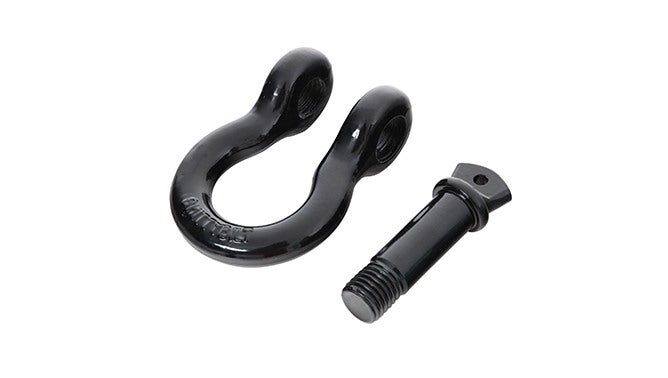If you’re one to explore the road less traveled, it’s inevitable that you or someone you’re wheeling with will get stuck at some point. When it comes to getting unstuck, there are plenty of off-road recovery tools you can and should have at your disposal. Whether you’re just looking for a little extra traction in mud or snow, we’ve got some great choices in traction/recovery boards, and if you are in a little deeper trouble than you expected, we’ve got some great winch suggestions that will get you back on track again.
Regardless of whatever you’re looking for to get your wheels spinning on solid ground, we’ve compiled a great list of options, so be sure to check them out. As an added bonus, we’ve partnered with 4 Wheel Parts to offer you 10% savings on your purchase at 4WheelParts.com by entering our exclusive code OFFROAD104WP at checkout. This option allows you to have some of the best off-road products shipped directly to your home, OR if you want you can pick up from your local 4 Wheel Parts location. Happy Shopping!
Lead Photo Courtesy Shutterstock/Cindy Creighton
Table of contents
Traction or Recovery Boards
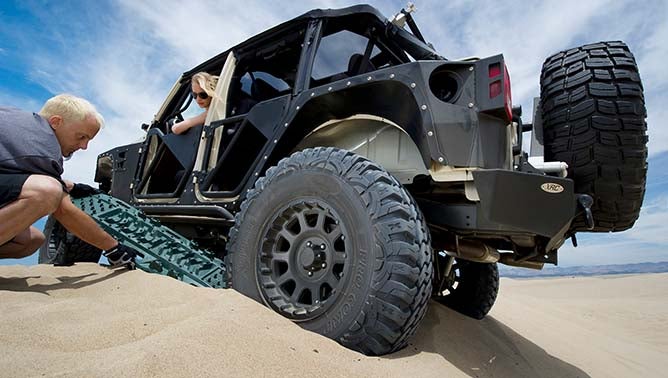
Most times when you’re stuck, whether it be sand, mud or snow, you just need a little extra traction to get yourself going again. In the past off-roaders used to rely on a shovel to dig out the tires or axles, and at times a shovel is still the proper tool, but having a set of traction boards can get you rolling in a matter of minutes. One of the top suggestions out of our Traction Board Buyer’s Guide are the ARB TRED Pro Traction Boards. Sold as a pair, these traction boards have a unique grip profile for maximum traction, are made from materials designed for durability, and are low-profile to maximize storage space. While they are priced on the high side, there are still other options that might be considered more affordable.
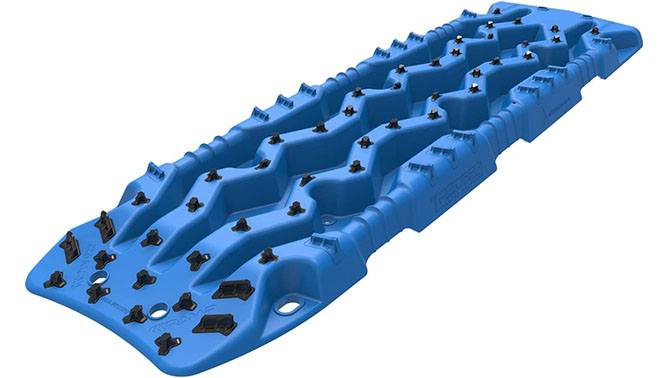
Brands like Smittybilt, Rough Country, and Mishimoto offer some good options as well, so definitely give them a chance for a spot in your rig.
Recovery Rope and Tow Straps
When traction boards just aren’t enough, it’s time to get a little help from a friend with a tug. Since I’ve gotten into off-roading years ago, I have seen the evolution of tow straps come a long way. The traditional straps like Smittybilt’s 3”x30 tow strap work great to pull out heavy rigs in sticky situations with a rating of 30,000 lbs. A nice thing about this strap is that it’s not only strong, but extremely budget friendly.
Now if you’re looking for the ultimate in tow straps, you’ll find yourself looking for one that is a kinetic rope style. Kinetic ropes provide up to 50% stretching when being used, meaning that they are great for absorbing shock during the recovery process. This means less stress on the tow and recovery vehicle, and also aides in pulling the stuck vehicle out. A rope style tow strap like the Jumbo Bubba Rope is a top option for off-roaders. This 1 ½”x30 rope has a breaking strength of 74,000 lbs. and is made from double-braided nylon with a vinyl polymer coating for maximum durability.
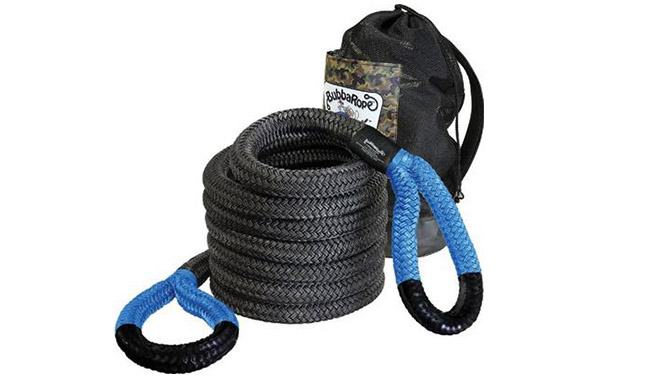
Just like tow straps, there are plenty of other options from companies like Smittybilt, VooDoo Offroad, and more to choose from when considering.
D-Ring Shackles
When it comes to attaching your recovery strap or rope, you always want to ensure that you’ve got a good pulling point to work off of. There’s nothing worse or more dangerous than a line that comes loose during a hard pull on a stuck vehicle. This is where some good D-Rings come into play. Many aftermarket off-road bumpers come with shackle tabs welded onto them to be used as a pulling point, and D-rings allow you to make a secure connection to shackle tabs. Additionally if vehicles only have loops instead of hooks for pulling points, you can run your tow rope through the loop and secure it back on itself by using a D-ring as well. They’re available in a variety of sizes with varying weight ratings so be sure to check for the proper specifications of your needs. I particularly like the Smittybilt ⅞” D-Ring Shackle for its heavy duty construction and 6.5 ton weight rating, but there are still plenty of other options from quality companies like Rough Country, WARN, Poison Spyder, and more.
Soft Shackles
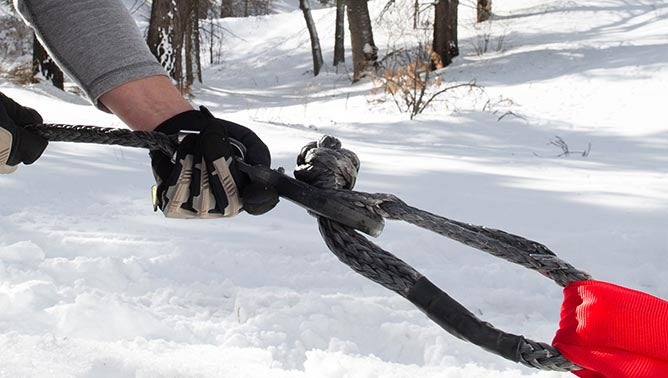
Soft shackles are often overlooked as important pieces of recovery equipment until you actually need them. They serve a very similar purpose to a standard steel D-ring shackle, but since they’re constructed from tough, durable nylon rope, they’re extremely lightweight, easy to store, and can be used to secure a tow strap or recovery rope in tight spots where traditional D-ring shackles won’t work. The only disadvantage of soft shackles is that because they’re made of rope, you need to be careful not to mount them around sharp pieces of metal since they can be cut. Aside from that, they’re incredibly handy to have in your recovery gear box to get someone or yourself unstuck.
Just like most every other piece of off-road gear, there are numerous options for you to choose from with the most important being weight ratings. Again, Smittybilt has one of the finer offerings with their Power Recoil Shackle Rope since this 1” diameter rope makes a 6” diameter loop and has a breaking strength of over 34,000 lbs.
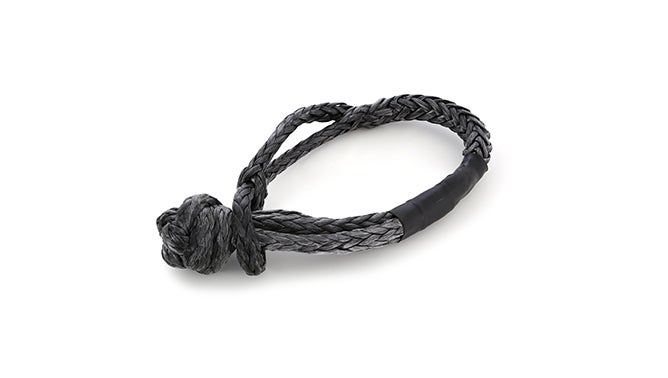
Other brands you can consider that are equally as reliable are WARN, VooDoo Offroad, Rugged Ridge, and Rough Country.
Winches
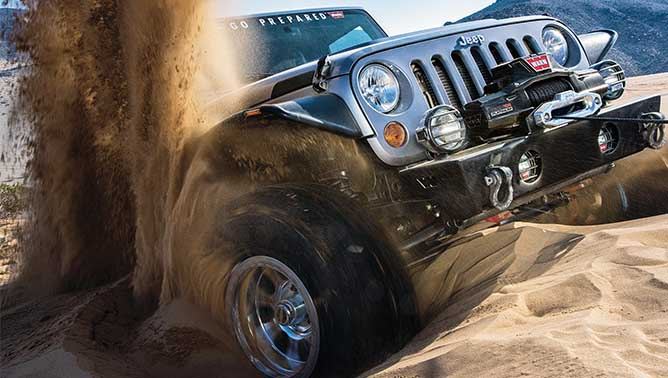
Winches can be one of the most expensive tools to get you unstuck, but they can be worth their weight in gold when you’re stuck in the middle of nowhere and out of cell service to call for help. When it comes to picking the right winch for your rig there are a few things you need to take into consideration. You need to know the total weight of your off-road rig (fully loaded) because you need to make sure that the winch you choose has the proper weight rating to pull you out. The general rule of thumb is to select a winch that has a weight rating that is twice the weight of your rig. For most mid-size trucks and SUVs this seems to be around 12,000 lbs and for full size trucks 15-17,000 lbs. Once you have the weight rating figured out, it’s time to determine how much you want to spend and that really depends on the brand and what kinds of bells and whistles (high end features) you want your winch to have.
The most basic winches feature a wired remote control that can be plugged into a port when you need to use it, but there have been advancements in technology when it comes to some winches so you can have wireless remote controls and even use your Bluetooth capable smartphone to control your winch.
One winch that I love is the unit that was selected as our Editor’s Choice in our Buyers Guide of Best Winches, which is the WARN Zeon 12-S Platinum. This winch features an 80’ synthetic rope, wireless remote control, is extremely reliable and quiet. A great feature of the wireless remote control is that it allows you to monitor your Jeep or truck’s battery voltage to avoid excessive drain during use and also the operating temperature of the winch to avoid overheating. I highly recommend reading our in-depth review on the WARN Zeon 12-S Platinum Winch to learn even more about its capabilities.
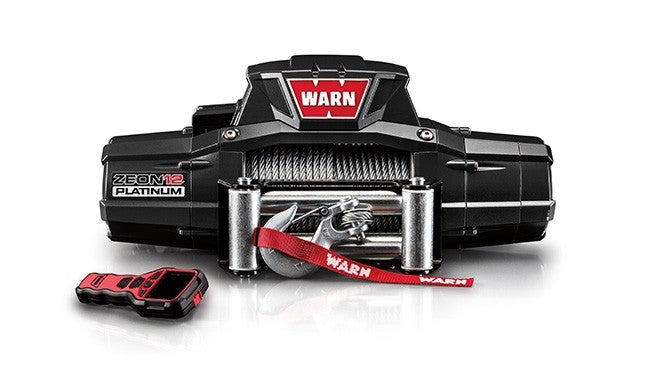
Other very capable winches can be found from companies like the Smittybilt with their XRC lineup. These winches are available with load ratings up to 17,500 lbs, with features like wireless remotes, and your choice of wire or synthetic rope. Another nice thing about these is that they’re very capable units that are also very affordable if you don’t need some of the fancy features that we previously mentioned. Aside from Smittybilt, you also have brands like Rough Country, Rugged Ridge, and others to choose from when you shop at 4WheelParts.com. This is a great time to take advantage of our exclusive code OFFROAD104WP, to save 10% on a high end item like a winch.
Just know that when you purchase a winch, you’ll also need a winch capable off-road bumper or special winch mounting kit to install. Additionally you might want to take a look at our list of Best Winch Accessories, to find some great items to accompany your winch to get you out of those hard spots.
Off-Road Jacks
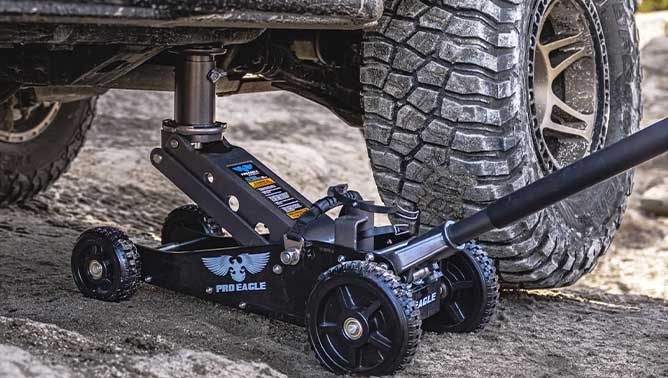
How exactly is a jack considered an essential tool to get you out from being stuck? They’re invaluable! If a jack is all you have, you can use it to raise the vehicle to get rocks, dirt, branches, or whatever else you can find to put under the tires to get some traction to start rolling again. There are two different types of jacks that you can use when off-roading. One the more popular styles are called trail jacks, farm jacks or by the company name Hi-Lift jacks. They’re all the same style and are favored by many off-roaders. The reason for their popularity is a simple compact design that allows you to lift from your bumpers or even from your wheels if you have the right accessory kit. They have weight ratings ranging from just over 4,000 lbs up to 7,500 lbs, and even have the ability to be used as a come-a-long hand winch. The only disadvantage of these jacks is that they’re not quite as stable as traditional floor jacks.
The Hi-Lift 48” All-Cast Jack is one of the more popular models that has the ability to lift, winch, and clamp, and also has a 7,000 lb weight capacity. Furthermore, its cast-iron construction makes it extremely strong and durable for the demands of off-road use.
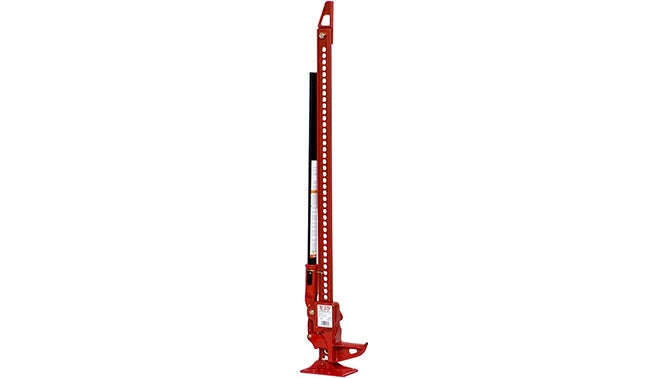
If you prefer the more traditional floor jack style, Pro Eagle has a great option for serious off-roaders. The Pro Eagle 3 Ton Big Wheel Off Road Jack features a lift height of 2’ 4” on a jack that rolls on oversize high capacity non-pneumatic, composite wheels. The all-aluminum construction makes it easy to handle, and the full-length skid plate ensures that the jack won’t be sinking into soft sand when lifting is needed.
4 Wheel Parts has a great selection of off-road jacks for you to choose from in every style, so you’re sure to get just what you need for your next off-road experience.
Now that we’ve done the work to give you a great list of the best off-road recovery tools, the ball is in your court to figure out how you want to outfit your rig. Here are some things you’ll want to take into consideration:
- What items fall into your budget?
- Where/how will you mount or store the items you get?
- Are you getting items that are rated to pull your rig out?
Once you have these basics figured out, get on over to 4WheelParts.com and load up your cart! Be sure to enter our exclusive code OFFROAD104WP to take advantage of a 10% discount on that order.
Frequently Asked Questions
How do you use traction boards?
Traction boards are great in that they require minimal work for a quick boost of traction. Simply get your traction board in front or behind of your tire (depending on which way you’re planning on driving out) and push between the tire and ground as tight as possible. What you’re trying to do is get your tires to bite the surface of the boards to climb out of the hole you’re stuck in.
When it comes to winch cable or synthetic rope, which is better?
This is the million dollar question. Ultimately what it comes down to is owner preference. While steel cable for winches are less expensive, they stand a higher chance of rusting, kinking, and breaking. Additionally steel cables are likely to split or fray leading to potential for your hand to get punctured during use.
Synthetic rope on the other hand is extremely strong and reliable but is more expensive, requires protection from the sun to prevent damage and is also more prone to abrasion.
Become an Off-Road insider. Get the latest news first by subscribing to our newsletter here.
We are committed to finding, researching, and recommending the best products. We earn commissions from purchases you make using the retail links in our product reviews. Learn more about how this works.
